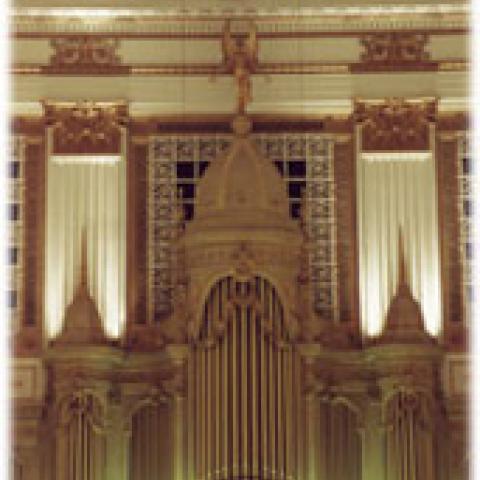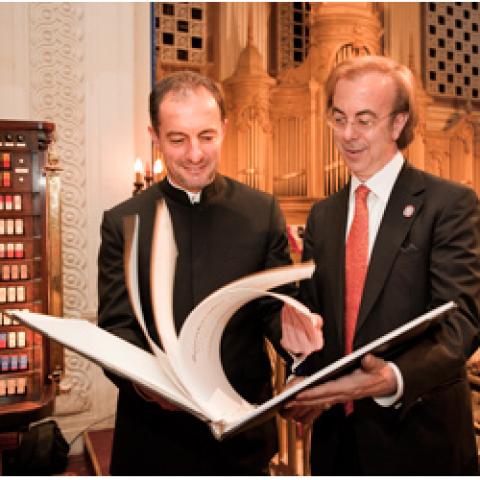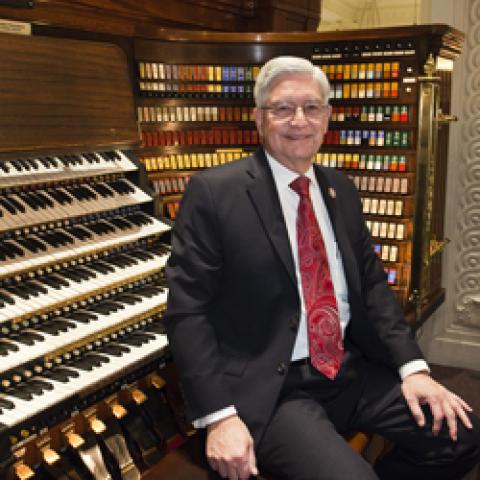This Saturday, September 27 in Philadelphia: As AGO Chapters and music organizations around the world prepare for their Organ Spectacular celebrations on October 19, we call your attention to an extraordinary musical event that inaugurates the fall season of the International Year of the Organ.
THE PHILADELPHIA ORCHESTRA in Concert with the WANAMAKER ORGAN
Celebrating Macy's 150th Anniversary
Saturday, September 27 at 7:30 pm
The Grand Court at Macy's
John Wanamaker Building
13th Market Streets
Philadelphia, PA 19107
Rossen Milanov, Conductor
Peter Richard Conte, Soloist
To buy tickets now click here
The soaring Grand Court of the famous Philadelphia department store—home to the thunderous Wanamaker Organ—will be transformed into a magnificent concert hall on Saturday, September 27, as The Philadelphia Orchestra combines its resources with those of the Wanamaker Organ, the world's largest musical instrument, comprising 461 ranks and 28,482 pipes. The program will include the premiere performance in this venue of Joseph Jongen's Symphonie Concertante. One of the most famous organ-orchestra pieces, closing in a thrilling pull-out-all-the stops toccata, it was composed for the Wanamaker Organ and the Philadelphia Orchestra in 1926, but to date has never been played on the instrument for which it was written.
This event, which heralds the start of the International Year of the Organ’s fall season, is co-sponsored by Macy's and by the Friends of the Wanamaker Organ. The concert is part of Macy's official 150th Anniversary Celebration.
In addition to the Jongen "Symphonie Concertante," the program includes “Fanfare,” a new composition by Howard Shore, who wrote the music for 'The Lord of the Rings' films; organ-orchestra arrangements of the Bach/Stokowski "Toccata and Fugue in D Minor;" and the sublime "Cortege and Litany" by Marcel Dupré. All of these works will be heard as never before in sheer sonic splendor as the world's largest pipe organ teams its resources with the formidable players of the full Philadelphia Orchestra. For the first time in decades, the entire resources of the Wanamaker Organ will be available, including the recently restored Orchestral Division.
Tickets for the 7:30 p.m. Saturday concert are priced from $100 to $5,000. Tickets priced $200 and above are in prime seating areas in the Grand Court. Tickets priced $250 and above will have a direct Main Floor view of the orchestra. Patrons purchasing tickets at $500 and above are entitled to a lavish pre-concert open-bar and hors d'oeuvres party amid the Gilded Age splendor of the Mayor's Reception Room at City Hall. They are also entitled to a Curator’s Tour of the Wanamaker Organ at Noon the following day, with light refreshments and wine in the Wanamaker Organ Shop at Macy's. Seating is extremely limited, and demand for this rare event is expected to be exceptionally heavy, so tickets should be purchased promptly.
We encourage you not only to attend this gala concert, but also to take advantage of the publicity and excitement surrounding this unprecedented event as you plan Organ Spectacular
Sincerely,
James Thomashower Executive Director
Additional information, including specifications for the Wanamaker Organ and a seating chart, may be found at www.wanamakerorgan.com
Further information is at http://www.ticketphiladelphia.org/





